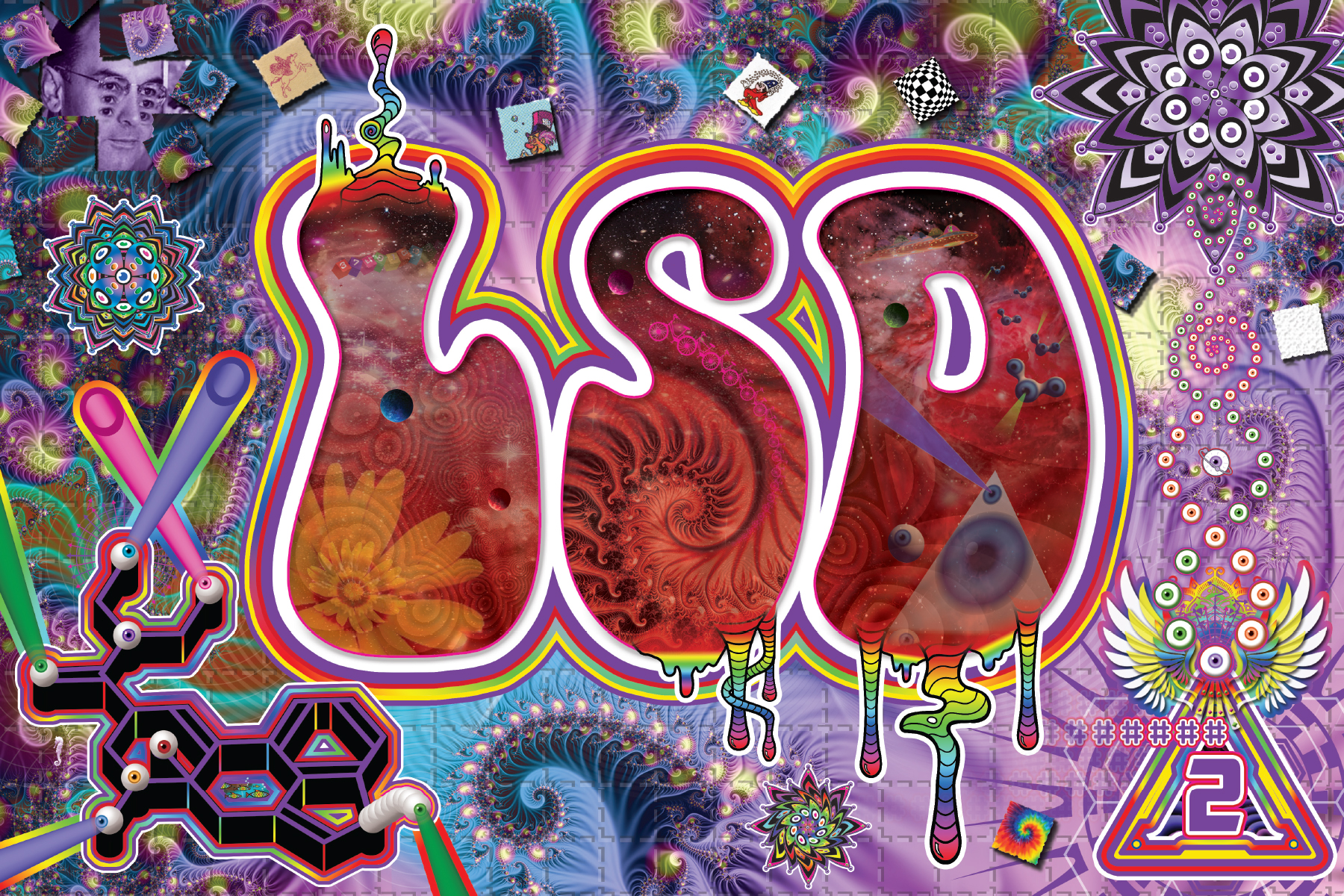
LSD
Post Date: February 10, 2014
Rachel Clark2023-03-28T16:18:30-07:00
LSD
What is LSD?
- LSD (“acid”) is a psychedelic drug discovered in 1938. It was first intentionally ingested by the Swiss chemist Albert Hofmann on April 19th, 1943.
- LSD was a major part of the anti-war counterculture movement of the 1960s. It has been used (unsuccessfully) by multiple government agencies to attempt mind control over enemies of war, and is now a very popular substance that’s used in many settings and communities.
What are the effects?
- Since an LSD trip lasts 8-12 hours, many people find that the experience is broken up into chunks that feel like chapters with different themes or emotions attached.
- “Chapter switching” can happen abruptly and occur because of an event, a thought, or a change in environment.
- LSD produces visuals for most (but not all!) people that range from slight color and shape distortions to full-blown changes to how a space or person appears.
- “True hallucinations,” where a person sees things that are fully not there, are very, very rare, despite what media depictions of psychedelics may suggest.
- While many people think of psychedelics as being all about the visuals, perhaps the more significant defining factor is the change that occurs in perception of self and environment.
- Familiar spaces might feel alien, and it might be difficult to follow conversations or read other people’s emotions. This is often coupled with strong emotional sensitivity and can be deeply cathartic, transformative, or uncomfortable.
- Some people find LSD to be sociable and silly, while others prefer to be alone or in less stimulating environments.
What is a typical dose?
- LSD is most often absorbed into small pieces of paper called “blotter,” but it can also be found in liquid form or administered via candy or gel tab. It is almost always consumed orally.
- LSD is extremely potent. A typical dose is between 100 and 200 micrograms (mcg), an amount so small it’s essentially invisible.
- A single square of blotter or drop of liquid usually contains between 80 and 150 mcg, but may contain less or more.
- Only an overseas lab like Energy Control can tell you how much LSD is in a given tab. Dealers might approximate, but no one can know for sure unless they laid the blotter themselves. Start with small doses of any new batch.
Be careful!
- LSD trips can sometimes be frightening, inducing extreme anxiety and panic. Although rare, some people relive the experience days, weeks, or even years later in episodes known as “flashbacks.” Flashbacks are not unique to hallucinogenic drugs; they can result from any intense psychological trauma.
- As with other psychedelics (and emotionally intense drugs in general), people who have personal or family histories of mood or psychotic disorders may be at increased risk of psychological upset after taking LSD.
- LSD and other psychedelics may cause a long-lasting disorder known as Hallucinogen Persisting Perception Disorder (HPPD) that causes varying degrees of psychedelic-like perceptual changes to take place in daily life. (Note: This is not “brain damage.” HPPD may be a product of increased visual associations.)
- While the majority of people who experience HPPD are not bothered by it, some people find it disruptive or upsetting. It’s possible that the incidence rate of HPPD is higher than it’s currently estimated to be.
More harm reduction tips
- As with all psychedelics, “set” and “setting” are important factors in determining whether someone has a positive or difficult experience. “Set” is a person’s mental state (their thoughts, mood, and expectations), while “setting” is the physical and social environment in which the drug is consumed. Being in a good mental state, with trusted friends in a supportive environment, reduces the risk of having a difficult trip on LSD.
- Always wait at least three hours before taking more LSD if you don’t feel your first dose, or you run the risk of having it hit you all at once.
- Acid should not have any strong taste. Metallic, bitter taste is a sign that you might have a different drug.

